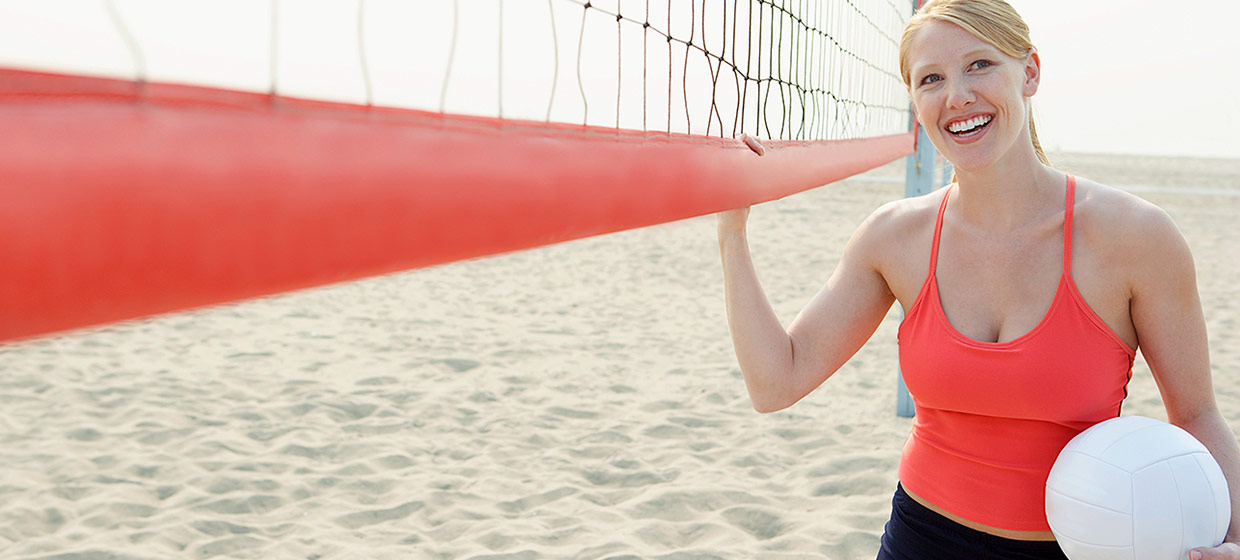As an injury that is commonly found in those who participate in high-intensity sports like basketball, football and soccer, an anterior cruciate ligament injury (ACL) affects roughly 250,000 people a year in the United States alone.
An ACL injury is the tearing of the anterior cruciate ligament inside your knee joint. This injury most commonly occurs during sports that involve sudden stops and changes in direction such as tennis and volleyball.
Specialists who treat ACL injury:
- Orthopedic Surgeon – a physician who manages special problems of the musculoskeletal system. Orthopedic surgeons diagnosis your injury or disorder, provide treatment with medication, exercise, surgery or other treatment plans, encourage rehabilitation by recommending exercises or physical therapy to restore movement, strength and function. Orthopedic surgeons prepare patients for surgery when an ACL injury requires surgical correction.
- Physical Medicine & Rehabilitation – is a medical specialty concerned with the diagnosis, evaluation, and management of persons of all ages with physical and/or cognitive impairment and disability.
- Pain Medicine – the field of medicine that is concerned with the prevention of pain, and the evaluation, treatment and rehabilitation of persons in pain.
- Physical Therapist - healthcare professionals who can help patients reduce pain and improve or restore mobility through developing fitness and wellness programs for healthier and more active lifestyles.
Types
Common types of ACL injury:
About half of all ACL injuries occur along with damage to other structures in the knee, such as articular cartilage, meniscus or other ligaments.
Injured ligaments are considered "sprains" and are graded on a severity scale.
- Grade 1 Sprains. The ligament is mildly damaged in a Grade 1 Sprain. It has been slightly stretched, but is still able to help keep the knee joint stable.
- Grade 2 Sprains. A Grade 2 Sprain stretches the ligament to the point where it becomes loose. This is often referred to as a partial tear of the ligament.
- Grade 3 Sprains. This type of sprain is most commonly referred to as a complete tear of the ligament. The ligament has been split into two pieces, and the knee joint is unstable.
Symptoms
ACL injury symptoms may include:
- A loud "pop" sound when knee is injured.
- Severe pain and inability to continue activity.
- Knee swelling that usually worsens for hours after the injury occurs.
- A feeling of instability or "giving way" with weight bearing.
Risk Factors & Prevention
You are at a greater risk for ACL injury if you:
- Play sports that involve sudden changes in direction or cutting around other players or obstacles, such as skiing, football, soccer, basketball, baseball, volleyball and tennis.
- Make accidental movements that may twist your knee. Examples include falling off a ladder, jumping from an extreme height, stepping into a hole or missing a step on a staircase.
- Lose muscle tone in legs (from aging or inactivity).
- Have unbalanced leg muscle strength, such as the muscles in the front of your thigh (quadriceps) are stronger than the muscles at the back of your thigh (hamstrings).
- Have had previous ACL injuries, especially if your knee sometimes gives out or buckles (chronic ACL deficiency).
Women have more ACL injuries than men. In sports, women injure their ACL up to eight times as often as men.
Reduce the onset of ACL injury by:
- Improve your conditioning. Training programs that have been shown to be effective in helping to reduce the risk of ACL injuries typically include strengthening and stability exercises, aerobic conditioning, plyometric exercises, "jump training," and risk-awareness training. Exercises that improve balance can also help when done in conjunction with other training exercises.
- Strengthen your hamstrings. Women athletes in particular should make sure to strengthen their hamstring muscles as well as their quadriceps.
- Use proper techniques. If your sport involves jumping, learn how to land safely. Studies have shown that if your knee collapses inward when you land from a jump, you are more likely to sustain an ACL injury. Technique training along with strengthening of some of the hip muscles can help to reduce this risk.
- Check your gear. In downhill skiing, make sure your ski bindings are adjusted correctly by a trained professional so that your skis will release appropriately when you fall.
